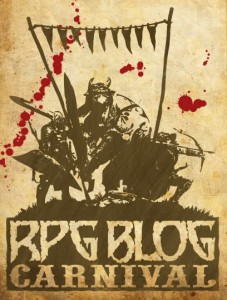A lot of indie games break the action of the game into scenes. A scene is a slightly ephemeral concept, and generally not well explained in gaming texts (I can’t think of a single one that takes the time to set this out in print). Quite a few uninspiring roleplaying experiences have resulted from not having much of an idea on what a scene should look like. So here’s a short discussion of how scenes work, how to establish and resolve them.
One person, often the GM but sometimes a player, is the director for the scene. That person should have an idea for some kind of interesting situation that one or more of the protagonists could find themselves in.
Examples could include:
– She is having a row with her boyfriend because he slept with someone else.
– He is trying to repair a ventilation unit, which is about to catch fire.
– She hears screams from inside a crashed bus and goes to investigate.
Once that person has decided on a central focus for the scene, they should say where the scene is happening and who is present.
The scene can now begin. The players then play out the action, roleplaying their characters as appropriate. Conflicts may arise and be resolved, either through randomness (dice etc), through the dictation of the director at the start of the scene (“she is having a row with her boyfriend and during the scene they will break up with each other”), or through players making in-character decisions (“screw this, I’m dumping him”).
The scene ends when we have resolved the central issue – the row with the boyfriend, the response to the burning ventilation unit or the rescue or death of the children. The director is generally responsible for calling the end of the scene, but other players are free to indicate if they think the scene should end, or to object, for instance if there’s some loose end they’d like to see tied up. The director has the final call, however.
The director should have some idea of what the central issue is before you start, and therefore what might trigger the end of the scene. If you don’t, there’s a good chance that the scene will wander aimlessly. You might not specify what that issue is at the start, though it’s a pretty good idea to do so if you want the other players to act appropriately. Even though you’ve got a good idea what the scene is focused on, remain flexible as the action may change your view of what the scene is “about”. If so, you may change your mind about when to end the scene.
The location of the characters may change during a single scene – it’s still the same scene as long as the central issue remains the same. (Though it might be that a scene ends when it becomes obvious that the characters are not in fact going to address the issue – don’t just keep following them around until they do!)
In general, when a scene has ended it’s time to think about what the next scene might be. Again, don’t just follow the characters around 24/7 – you want to be there when interesting stuff is happening, just like in a book or movie.
So there we go, that’s my attempt at explaining what scenes are all about. Does that make sense to you? Do you have different ideas? Let me know what you think!
